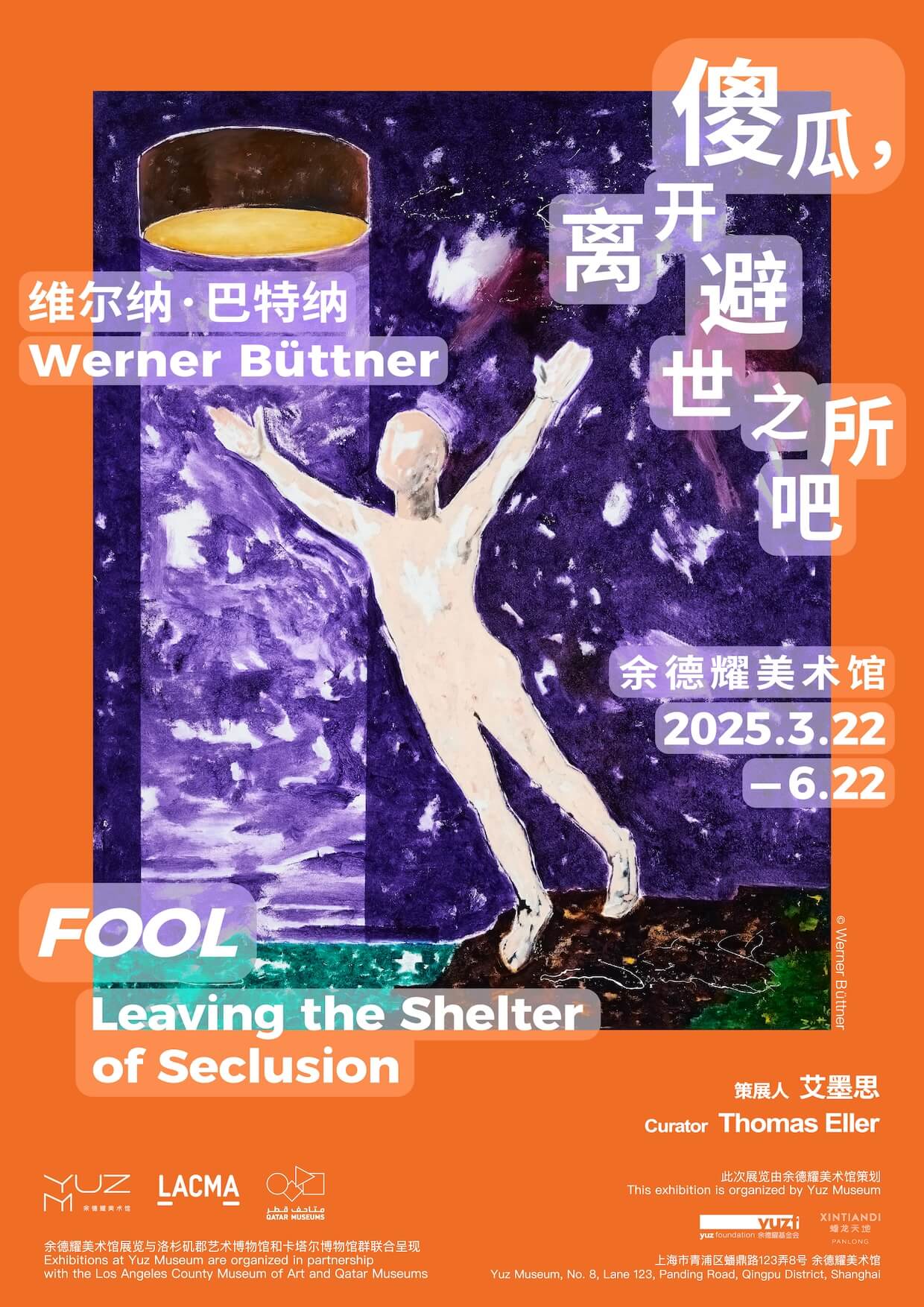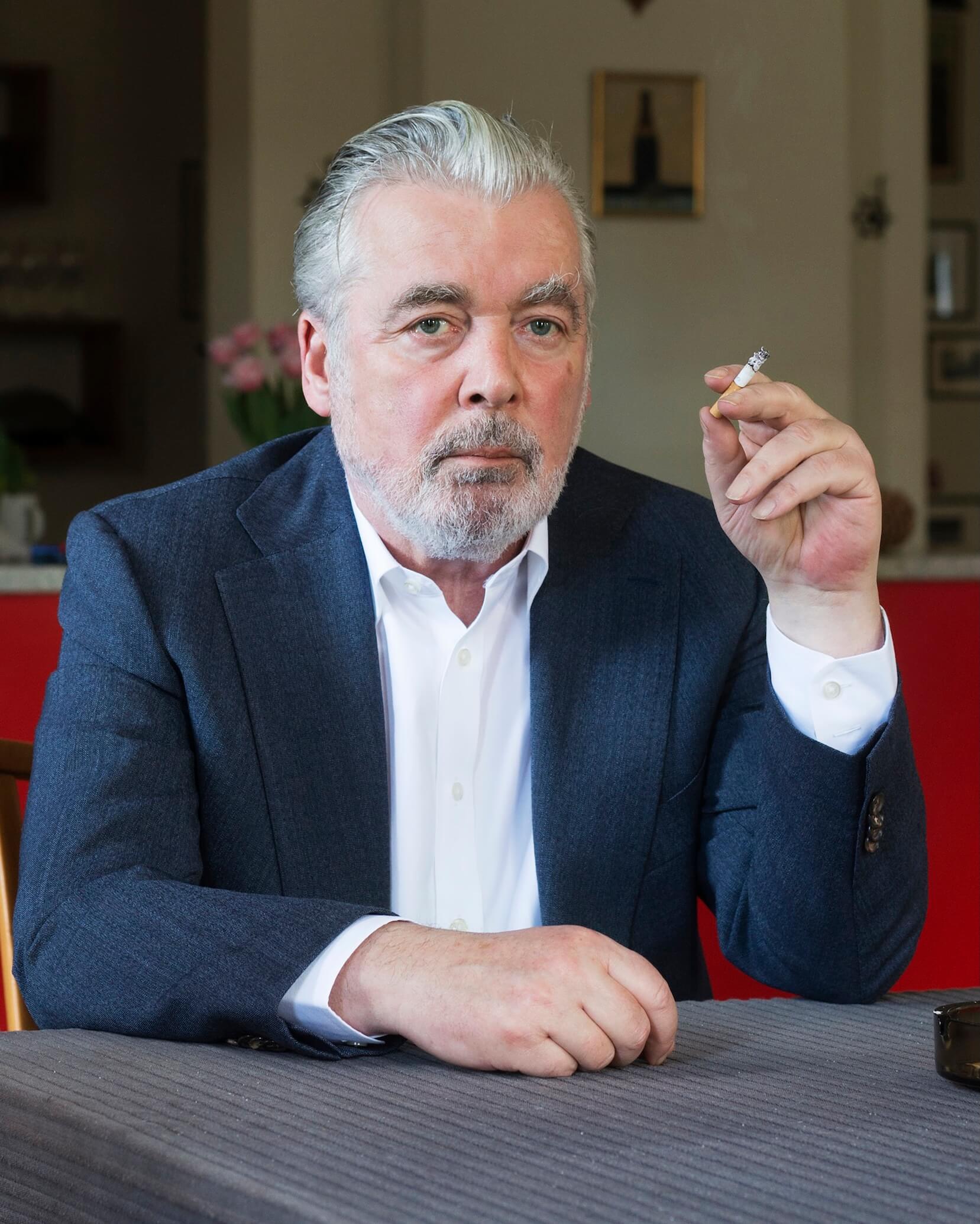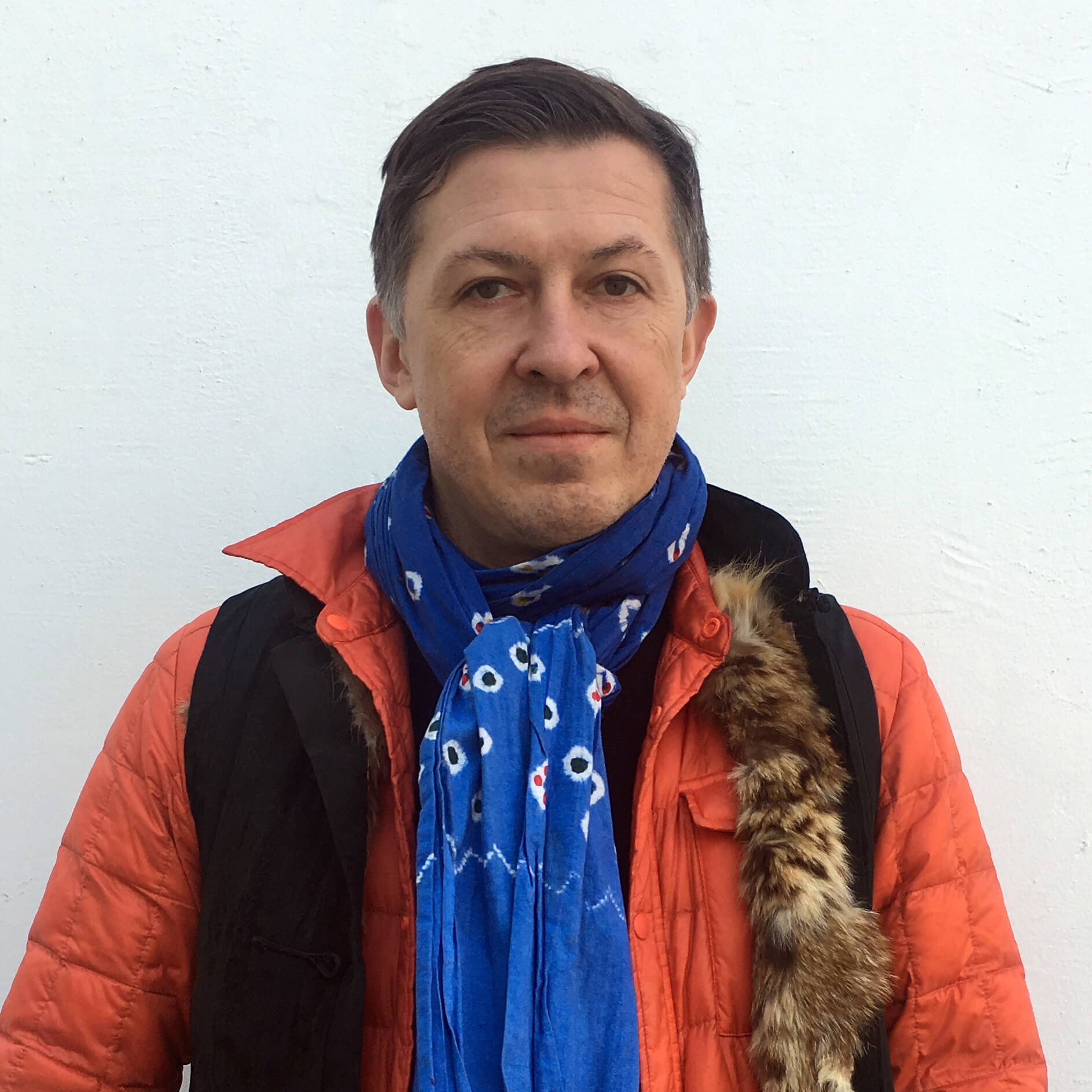Werner Büttner: Fool, Leaving the Shelter of Seclusion
Curated by Thomas Eller
March 22 – June 22, 2025
Yuz Museum, Panlong Tiandi, Shanghai

Yuz Museum is pleased to present “Fool, Leaving the Shelter of Seclusion”, a major survey exhibition to chronicle, in a few exemplary steps, the trajectory of one of Germany’s most influential artists, Werner Büttner, from March 22 to June 22, 2025. It is the artist’s first institutional solo exhibition in Asia. Organized by Yuz Museum in close collaboration with the artist and the curator Thomas Eller, this exhibition features a total of 46 major works, including 39 paintings and a group of 7 sculptures, comprising a comprehensive overview of the artist’s prolific career spanning from 1979 to 2024.
Born in Jena in 1954, Werner Büttner is a key figure in the German art scene of the late twentieth century. With his close friends, Martin Kippenberger and Albert Oehlen, he formed a strong presence, emerging in the late 1970s, projecting a sense of (sometimes dark) humor that was intended to shake up and invigorate an art scene steeped in rigid conceptualism. Their “joy of (bad) painting” became an inspiration for a new generation of artists and “electrified” a whole generation of younger painters, like Daniel Richter and Jonathan Meese, both his students. Büttner also left his mark on many of his Chinese students that chose to come to Hamburg and for him to be their teacher.
“Neue Wilde (New Wilds)” was an artistic movement in West Germany that emerged in the late 1970s. The appearance of the trio (Büttner, Kippenberger and Oehlen) resonated throughout Germany with similar groups in other cities. Mülheimer Freiheit in Cologne, Moritzboys in Berlin and Gruppe Normal in Düsseldorf. Their “Hunger nach Bildern (Hunger for Pictures)” brushed aside an anemic and formulaic art practice and ushered in a new era of cultural invigoration.
This is exactly the same time when in China a whole new generation of artists emerged and founded what is today the very distinct and very strong Chinese artworld. Both developments share a kindred spirit and are both an emanation of “Zeitgeist” (as Hegel would have called it) and in fact the 1982 exhibition in Berlin by the same name, “Zeitgeist”, galvanized the whole Western art scene well beyond Germany. In Beijing, it was the artists who then became the Stars Group, that launched an exhibition in 1979, that jump-started the scene, while the 1993 exhibition “China Avantgarde” in Berlin brought international success to the blossoming artworld of China. Showing Werner Büttner’s work at the Yuz Museum nods to the kinship of “A New Spirit in Painting” that emerged simultaneously in different parts of the world.
Werner Büttner emerged from this time as a singular and exceptional voice. If Germany had a Literati Culture, Büttner could be considered one of the most prominent proponents. There is hardly any other artist in Germany, who is more well-read than him. Harald Falckenberg, collector of contemporary art, once said: “If Büttner had not become an artist, he would also have become a famous writer.” The artist’s field of interest is extremely wide. From the myths of early nomadic cultures to the skepticism of Montaigne’s Essais, the artist has devoured Western philosophy and grand literature, not as an academic, but for personal use and as a means of developing his own personality. The human condition in all its glory and its misery is at the core of his interest and compassion. His intellectual curiosity and rigorous thinking are paired with a heightened sensibility for human strife. And all his paintings are witness to this uncompromising commitment to “La Condition Humaine”.
Looking at Büttner’s paintings at first is a puzzling experience. He often uses metonymic strategies (exchanging one word/image for a similar one), or metaphors (exchanging one word/image for something else completely). In other words, images become shields of sorts, that protect and insulate the factual, or emotional core from the harshness of reality. This has become Büttner’s artistic methodology and visual language which he applies to all aspects of human life. There seem to be two reoccurring traits in his work, deep irony that cautions you to never believe in anything you see, and a deep desire to keep meaning alive, despite its obvious dangers. Werner Büttner is a believer, a believer in nothing. He sees the world and its references as a quarry of sorts, from where he receives the building blocks of his pictorial world, and he sees connections where no one else has looked.
The exhibition “Fool, Leaving the Shelter of Seclusion” is structured around eight important chapters from his imaginary book of life: The Beginnings and Other Self-Portraits; The Self; Women; Art History as Mirror; Man and Animal; Childhood; Literature as Saviour; La Condition Humaine. For the first time in China, this exhibition presents an exemplary cross section of the vast artistic oeuvre of Werner Büttner, demonstrating the unique power of art as a tool for critique and reflection on the contradictions and absurdities of human existence.
About the Artist

Portrait of Werner Büttner © Albrecht Fuchs Image courtesy of the artist
Werner Büttner was born in 1954, Jena, Germany. He studied Law at Berlin Free University in 1973. He moved to Hamburg in 1977, and worked with Georg Herold, Martin Kippenberger and Albert Oehlen from 1977 to 1985. From 1989 to 2021, he was a Professor of Painting at the University of Fine Arts Hamburg. The artist currently lives and works in Geesthacht, Germany.
Werner Büttner’s recent solo exhibitions include: Malerei 1981-2022, Galerie Max Hetzler, Germany, 2023; Werner Büttner, Galerie Max Hetzler, Germany, 2022; Analogies, Allegories and Metaphors of the Human Condition, Triumph Gallery, China, 2022; Last Lecture Show, Hamburger Kunsthalle, Germany, 2021 and The Ranch, New York, USA, 2022; No Scene from My Studio, Simon Lee Gallery, UK, 2021; Undichte Schlüssellöcher (Leaky Keyholes) and Bilder 1979-2019 (Images 1979-2019), Contemporary Fine Arts, Germany, 2020, and many more. Recent group exhibitions include: How’s my painting? Paintings from the Falckenberg Collection, Deichtorhallen Hamburg, Germany, 2025; Früher war schon immer jetzt. Malerei seit 1947 neu präsentiert (Back then has always been now. Painting since 1947 reconsidered), Hamburger Kunsthalle, Germany, 2021; Büttner, Kippenberger & Oehlen: Trio Infernal, Thomas Ammann Fine Art AG, Zurich, 2020, and many more.
In addition, Büttner’s works are in many important collections, institutions and foundations, such as the Solomon R. Guggenheim Museum, USA; Cincinnati Art Museum, USA; FRAC Poitou-Charentes, France; Hamburger Kunsthalle, Germany; Mumok – Museum Moderner Kunst Stiftung Ludwig Wien, Austria; Harvard Art Museum, USA; Pinakothek der Moderne, Germany, and many more.
About the Curator

Portrait of Thomas Eller Image courtesy of the curator
Thomas Eller was born in 1964, Coburg, Germany. He studied Fine Art, Philosophy and Art History in Berlin. From 2004 to 2009, he was Editor-in-Chief and Executive Manager Germany for artnet.de, and Director of Temporäre Kunsthalle Berlin in 2008 and 2009. In 2017 he created the Gallery Weekend Beijing. In 2023 he was a Curator for the 7th Guangzhou Triennial, The Symphony of All Changes. He lives in Berlin and Mürsbach, Germany.
Thomas Eller has been collaborating with Werner Büttner since 2021. In 2022 they published an interview book: Zuweilen ist Ehrlichkeit die eleganteste Maske (At Times Honesty is the Most Elegant Disguise) at Starfruit publishing, Nuremberg, Germany. In 2022 he curated Büttner’s solo exhibition Analogies, Allegories and Metaphors of the Human Condition at Triumph Gallery, Beijing.
Exhibitions at Yuz Museum are organized in partnership with the Los Angeles County Museum of Art and Qatar Museums

Made Possible by Yuz Foundation
About Yuz Museum
Yuz Museum, officially opened in May 2014 in Shanghai, is a contemporary art museum founded by Mr. Budi Tek, a Chinese-Indonesian entrepreneur, philanthropist, and collector. As one of the first non-profit institutions along the West Bund Culture Corridor, the museum has been following its founder, Budi Tek’s philosophy of “collecting to share”, with the mission of “drawing the world’s attention to Shanghai” and “bringing art into people’s daily lives”. Committed to advancing the development of contemporary Chinese art, actively engaging in the field of art education, and promoting cultural dialogues between East and West as its own responsibility, and exploring to answer the question “It takes ten years to grow trees, a hundred years to grow people, then how many years to grow a life of art?” By doing so, it has successfully established a bi-directional parallel between “history” and “future” throughout all its exhibitions and developed a variety of public outreach programs. It introduces the Chinese public to contemporary art and the world to Shanghai and China through its exhibitions that span across China and the West.
Since its opening, Yuz Museum has been the home of many internationally acclaimed exhibitions such as the world’s largest Giacometti Retrospective, the “Rain Room”, the Asia premieres of Andy Warhol’s “Shadows”, KAWS’s “Where the End Starts”, “Charlie Chaplin: A Vision,” “Yoshitomo Nara” , “Watering the Desert: Contemporary Art from Qatar”, etc., which have had a great impact on domestic and international culture, art, education, and other fields.
Yuz Museum has been active in the world of art and has launched in-depth collaborations with many internationally renowned art museums. On October 31, 2019, Yuz Museum Shanghai entered into a landmark collaboration with the Los Angeles County Museum of Art and Qatar Museums to jointly develop and share exhibitions and programs across their institutions.
With its continual development, the museum has been looking into possibilities of further expansion and made its home in the core area of Shanghai Greater Hongqiao International Business District. On May 17, 2023, as the new venue of Yuz Museum at Panlong Tiandi was completed and opened to the public, the museum launched the 2nd phase of its strategic plan: YUZ FLOW. In the coming ten years, the museum will carry on with Mr. Budi Tek’s philosophy, further explore how to use “art to grow generations to come”, take “flow with Yuz, breathe with art” as its vision for the 2nd stage, and make a gradual layout shift from a “white box” to a “satellite network”, marking the start of the museum’s 2nd chapter with a brand-new model: “one main space + various encounters”.
In 2024, the Yuz Museum launched a children’s art education project – YUZ DOLAN, which has been planned and developed by our expert and innovation team for many years. “DOLAN” is derived from the Indonesian Javanese language, meaning “play”, and its opening will reshape the museum space into an “art playground” for the participants. Specifically tailored for children, this project is launching diverse content ecosystems including creative art courses, art museum education charity events, and artist’s workshops, which are deeply rooted within the Yuz Museum’s professional experience in art exhibitions, research collections, and public education. We are committed to creating an artistic paradise for children to grow happily, express themselves, and unleash their creativity.
About LACMA
Located on the Pacific Rim, LACMA is the largest art museum in the western United States, with a collection of nearly 152,000 objects that illuminate 6,000 years of artistic expression across the globe. Committed to showcasing a multitude of art histories, LACMA exhibits and interprets works of art from new and unexpected points of view that are informed by the region’s rich cultural heritage and diverse population.
LACMA’s spirit of experimentation is reflected in its work with artists, technologists, and thought leaders as well as in its regional, national, and global partnerships to share collections and programs, create pioneering initiatives, and engage new audiences.
About Qatar Museums
Qatar Museums (QM), the nation’s preeminent institution for art and culture, provides authentic and inspiring cultural experiences through a growing network of museums, heritage sites, festivals, public art installations, and programmes. QM preserves and expands the nation’s cultural offerings, sharing art and culture from Qatar, the Middle East, North Africa, and South Asia (MENASA) region with the world and enriching the lives of citizens, residents, and visitors. Under the patronage of His Highness the Amir, Sheikh Tamim bin Hamad Al Thani, and led by its Chairperson, Her Excellency Sheikha Al Mayassa bint Hamad bin Khalifa Al Thani, QM has made Qatar a vibrant centre for the arts, culture, and education in the Middle East and beyond. QM is integral to the goal of developing an innovative, diverse, and progressive nation, bringing people together to ignite new thinking, spark critical cultural conversations, and amplify the voices of Qatar’s people. Since its founding in 2005, QM has overseen the development of museums and festivals including the Museum of Islamic Art (MIA) and MIA Park, Mathaf: Arab Museum of Modern Art, the National Museum of Qatar (NMOQ), 3-2-1 Qatar Olympic and Sports Museum, QM Gallery Al Riwaq, QM Gallery Katara, the Tasweer Qatar Photo Festival, and Design Doha. Future projects include Dadu: Children’s Museum of Qatar, Art Mill Museum, Qatar Auto Museum and the Lusail Museum. Through its newly created Creative Hub, QM also initiates and supports projects – such as the Fire Station Artist in Residence, the Tasweer Qatar Photo Festival, M7, the creative hub for innovation, fashion and design, and Liwan Design Studios and Labs – that nurture artistic talent and create opportunities to build a strong and sustainable cultural infrastructure.
Animating everything that Qatar Museums does is an authentic connection to Qatar and its heritage, a steadfast commitment to inclusivity and accessibility, and a belief in creating value through invention.

